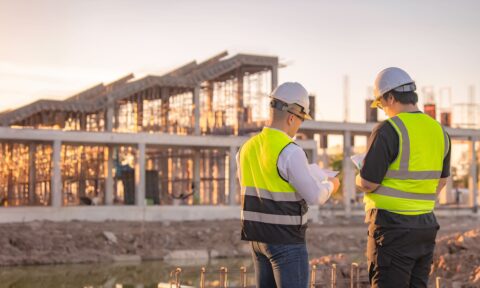Basic Naval Architecture – 2 Day
- Online Naval Architecture Training Course.
- Provides conversion or refresher training for science and engineering graduates.
- Designed to offer a broad understanding of ship behavior under various conditions.
- Intended for practicing engineers and research scientists.
- Innovative course with a balance of theory and practice.
Overview
The Online Naval Architecture Training Course aims to provide conversion or refresher training for science and engineering graduates, experienced draughtsmen, and professionals involved in ship design and shipbuilding. Led by Dr. P. Krishnankutty, the course covers ship behavior under various conditions, including stability, resistance, propulsion, seakeeping, and maneuvering. Participants will gain a broad understanding of ship design concepts and practical applications. This innovative course balances theory and practice, benefiting engineers, scientists, and personnel from ship management, oil companies, classification societies, and shipbuilders.
Who should attend
Engineers, Scientists, Ship Management Personnel, Oil Company Staff, Classification Society Personnel, Ship Builders
Course Content
About The Course
The primary objective of this short course is to provide conversion or refresher training for science and engineering graduates and experienced draughtsmen who hold active line responsibilities in the design of ships and ship systems and in shipbuilding practice. The course is designed in such a way that at the end of the lectures, the person will have a very broad understanding of the behaviour of ships under a variety of loading and operating conditions. The syllabus will include: basic definitions of ships, structural components of the hull girder, general arrangement, ship as functional blocks, resistance and propulsion methods. The course is intended for practicing engineers and research scientists who need to understand the concepts behind the behaviour of ships & ships system at sea.
Who Should Attend?
Engineers and scientists involved in the design of ships and ship systems. Personnel from ship management companies, oil companies, classification societies and ship builders will benefits from attending this course. The course is innovative in both content & structure with a careful balance of theory & practice.
PROGRAMME (All timings are in BST(GMT+1))
Day 1:
09.00 – 10.30 Lecture 1: Introduction & Definition: ships
Ship types; Basic ship dimensions and form; Hydrostatic data and curves; Bonjean curves; Capacity plan
Prof T Krishankutty
10.30 –10..45 Break
10.45 – 12.15 Lecture 2: Initial stability
Ship equilibrium conditions; Causes of heeling moments; Metacentric height; Righting arm curve; Effects of ship dimensions and parameters on stability; Effect of weight changes on stability; Evaluation of stability; IMO criteria on intact stability;
Prof T Krishankutty
12.15 – 12.45 Break
12.45 – 14.15 Lecture 3: Large angle stability
Cross curves of stability; Dynamic stability levers- Wind heeling moment, maximum allowable KG – Stability of grounded vessels
Prof T Krishankutty
14.30 – 16.00 Lecture 4: Damage Stability
Ship subdivision, Effects of Flooding; Free Surface Effect on Stability; Floodable length; Damaged stability calculation and standards.
Prof T Krishankutty
Day 2
09.00 – 10.30 Lecture 5: Resistance & Propulsion
Components of ship resistance – frictional, wave making, viscous pressure, appendage; Resistance model tests and extrapolation to prototype; Ways to reduce ship resistance.
Screw propeller; Powering and efficiency components; Propeller theory, Hull- propeller interaction; Open water and self-propulsion tests; Propeller cavitation; Design of screw propellers.
Prof T Krishankutty
10.30 –10..45 Break
10.45 – 12.15 Lecture 6: Seakeeping-IShip motions; Seaway effects on ships; Undamped and damped motions in still water and in regular waves; Motion in irregular seas; Seakeeping criteria; Methods to improve seakeeping performance; Motion stabilisation.
Prof T Krishankutty
12.15 – 12.45 Break
12.45 – 14.15 Lecture 7: Seakeeping-II
Ship motions; Seaway effects on ships; Undamped and damped motions in still water and in regular waves; Motion in irregular seas; Seakeeping criteria; Methods to improve seakeeping performance; Motion stabilisation.
Prof T Krishankutty
14.30 – 16.00 Lecture 8: Manoveoring:
Controllability – elements of ship motion control system; Surface ship manoeuvring equations of motion, types of motion stability, mathematical models, hydrodynamic derivatives; standard manoeuvring tests, IMO
Prof T Krishankutty
ABOUT THE LECTURERS:
Dr.P.Krishnankutty, Professor, Ocean Engineering, IIT Madras
Dr. P. Krishnankutty is a Professor at the Department of Ocean Engineering, Indian Institute of Technology (IIT) Madras, with more than 40 years of teaching experience in the field of naval architecture. Prior to joining IIT Madras in 2006, he was a faculty member at Department of Ship Technology, Cochin University of Science and Technology, India.
Dr. Krishnankutty has a Bachelor’s degree in Naval Architecture and Ship Building from University of Cochin, India, obtained his Masters in Ocean Engineering from Stevens Institute of Technology, New Jersey, USA and Ph.D in the area of Marine Hydrodynamics from IIT Madras. He was a research fellow at the Department of Naval Architecture & Marine Engineering in the Universities of Glasgow and Strathclyde, UK during 2001-2004. His research has spanned several areas within the naval architecture field including ship motions and manoeuvring. His work encompasses both numerical and experimental approaches. The 3D FEM based software to solve wave-structure diffraction- radiation problem and the experimental facilities such as a Planar Motion Mechanism system, false bottom for shallow water studies, and the bio- mimetic fin oscillation facility developed by his team are being widely used by the staff and research scholars of IIT Madras.
Dr.Krishnankutty is well recognised in the professional arena. He is currently serving as the Vice President of the Asia Region of the Royal Institution of Naval Architects (RINA) headquartered in London. He is also serving as the Chairman of the Hydrodynamics Panel of the Naval Research Board, Ministry of Defence, Govt. of India and Member of the Research Advisory Committee (RAC) of the National Institute of Ocean Technology (NIOT), Ministry of Earth Science, Govt. of India. He also served as Dean of the Faculty of Ocean Engineering in Kerala University of Fisheries and Ocean Sciences (KUFOS) during 2015-2017.
Duration: 2 Days
Cost: £595 + Vat



